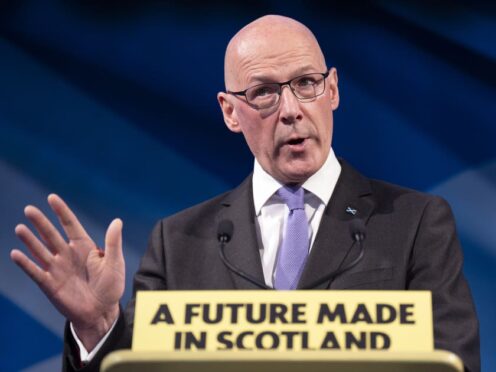This summary of claims from the campaign trail has been compiled by Full Fact, the UK’s largest fact checking organisation working to find, expose and counter the harms of bad information, as part of the PA news agency’s Election Check 24.
Annual vs cumulative figures
Several headline-grabbing figures we’ve seen quoted in recent weeks have a curious thing in common—it’s not immediately clear whether they are an annual amount, or cover a number of years added together.
And in the case of at least three claims from the Conservatives, the figures are in fact cumulative totals for a number of years, even though often this isn’t apparent from the way they are quoted.
The Office for Statistics Regulation (OSR) has previously raised concerns about cumulative figures being quoted without it being clear that they cover multiple years.
One prominent example is the Conservatives’ claim that a Labour government would mean a £2,000 tax rise for every working family. As we’ve said before, that figure is unreliable—but it’s also an estimate of the additional tax families would supposedly pay cumulatively over the next four years under Labour, not every single year, as some might assume.
A statement by the OSR noted “someone hearing the claim would have no way of knowing that this is an estimate summed together over four years”.
Similarly, the Conservatives’ claim that Labour’s pension plans would result in a “£1,000 retirement tax” is based on their analysis of what their “triple lock plus” policy would cumulatively save the “average pensioner” between 2025/26 and 2029/30, compared to Labour’s plans which would retain the existing rules. We’ve sometimes seen this figure quoted in ways that don’t make it clear it covers a five-year period.
And before the election was called, we saw the Conservatives claim they had pledged to increase defence spending by an “additional £75 billion” by 2030. One problem with this claim is that it assumes spending would otherwise have been frozen in cash terms, and fallen as a percentage of GDP, over the next six years. But it was also a cumulative rather than annual total, which as a 2022 House of Commons Library briefing about a similar claim noted, is “not how increases and decreases in spending are usually discussed”.
The SNP manifesto
On Wednesday, the Scottish National Party published its manifesto.
Speaking at its launch, Scottish First Minister and SNP leader John Swinney MSP claimed that Scotland “has essentially decarbonised” its electricity.
Scotland generates more renewable electricity than all the electricity it uses, but much of that renewable power is exported.
In 2023 about 65% of the electricity Scotland actually used came from renewables. Some 11% came from fossil fuels and a further 23% from nuclear power plants.
The SNP’s manifesto claims the Scottish government has “frozen council tax across Scotland”. This is true for the current financial year, but doesn’t tell the full story.
Council tax in Scotland was frozen between 2008/09 and 2016/17. It increased between 2017/18 and 2020/21 (at capped rates), before being frozen again in 2021/22. Rates generally rose in 2022/23 and in 2023/24, and were then frozen again for 2024/25. The Scottish government has not yet said if council tax will be frozen next year.
